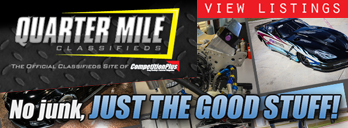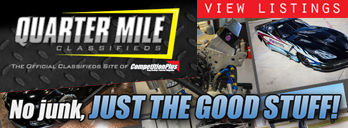CP MOTORSPORTS: TOM HIGGINS: IT'S A HEATWAVE
Click here to follow us on Twitter @circletrackplus Click here to like us on Facebook

Imagine getting in your personal car on the hottest day of summer, rolling up the windows, turning the heater on high and driving from Charlotte to Philadelphia.
That's how the late NASCAR Hall Of Fame nominee Buddy Baker once described what it was like to run in the Southern 500 at Darlington Raceway on sultry South Carolina Labor Days during the 1950s, '60s and '70s before "cool suits" and such came along.
The issue of racing when the thermometer is teasing 100 degrees comes to mind because of the heat wave presently scorching much of the nation.
There were times during summer races a few decades ago at Charlotte, Daytona Beach, Dover and Talladega when searing weather conditions seemed to be as much of a threat to the drivers' health as being involved in a wreck.
This was true some times even at Bristol, although the track in Tennessee is in the Blue Ridge Mountains, where thermometer readings normally are about 10 degrees lower than in the flatlands.
"In my mind, Darlington on Labor Day ranks as the toughest overall when it came to battling the temperature," said Baker.
I agree.
It was 100 and the humidity was horrible at Darlington on the day I covered my first major race, the Southern 500 of Sept. 1, 1958.
The track temperature soared so high that it caused tires to blow out with scary regularity, leading to spectacular crashes, mainly in what was then the first turn (now the third turn). Drivers Don Kimberling, Jesse James Taylor, Eddie Pagan and Eddie Gray got atop the steel railing and essentially tore it away.
Future hall-of-famer Jack Smith exploded a tire entering the turn and went out of the track.
Only 28 of the 48 starters were running at the finish as the heat caused engine failures, too.
Fireball Roberts,driving in the smooth style for which he was noted, persevered to win the race by five laps in a 1957 Chevrolet.
I also recall another scorcher at Darlington in the '70s in which drivers became so stressed that fellow competitors repeatedly were called on for relief roles.
Benny Parsons was among those forced from the cockpit. When Parsons emerged from his car he almost collapsed on pit road. As my momma used to say, "His face was as red as a pickled beet." Benny was rushed to the small infirmary in the infield and placed in a large tub of ice, barely aware that Donnie Allison had taken over the No. 72 Chevy.
Lo and behold, Allison overheated after a hundred or so laps and he, too, had to abandon the race.
Who relieved Allison? Incredibly, a recovered Benny Parsons.
During one summertime race in the '70s--sorry, I can't remember if it was at Charlotte or Talladega--it was so hot a whopping 14 drivers had to ask for someone to take over the steering wheels in relief. It became difficult to keep up with who was in which car.
Perhaps the most infamous heat-related story in NASCAR history didn't involve drivers or crew members on pit road, but high school kids.
For a Coca-Cola 600 in the 1980s, Humpy Wheeler, then president and flamboyant promoter at Charlotte Motor Speedway, decided that as part of a glittering pre-race show he would assemble "the biggest band in history."
Youngsters were brought by bus from all over the Carolinas and parts of Tennessee and Virginia to take part.
It was a miserably hot May day and the band members, many wearing uniforms of very heavy material, mostly had to march from the tunnel area in the fourth turn all the way up the backstretch and around the second and first turns to assemble in front of the main grandstand.
Before a note was played some among the thousands of kids started dropping from heat exhaustion.
Alarmed, a couple track officials beseeched Wheeler to call off the part of the extravaganza involving the teenagers.
"The show must go on!" responded Humpy.
Then, dozens more of the youthful musicians went down.
The P.A. announcer asked doctors and nurses and medical techicians present in the stands to come to the scene along the frontstretch to help render aid. Finally, Humpy had seen enough.
"The show must stop!" he ordered. And it did.
High temperature, however, never has forced a halt to a major NASCAR event.




